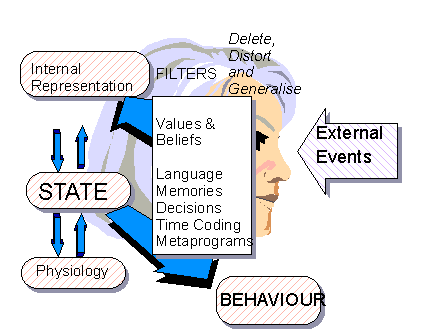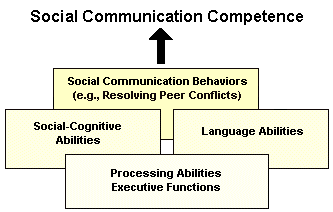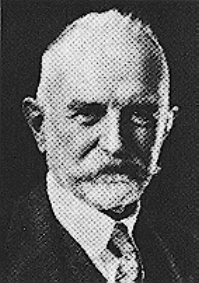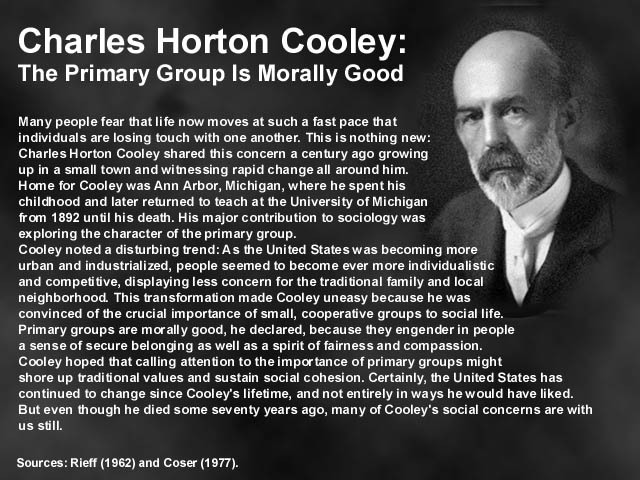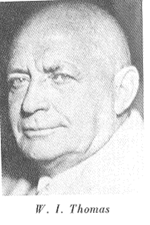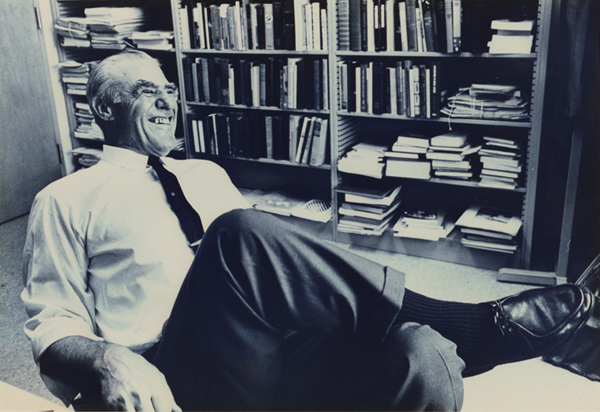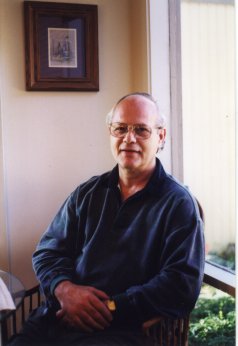Internal
Links
Top
|
|
Outline on an Advanced Examination of
Symbolic Interactionism
|
|
External
Links
|
| |
- Project: Living the Tenets
of Symbolic Interactionism |
Link
|
| |
S - I SHOWS HOW A SET OF MICRO / INDIVIDUAL PROCESSES AGGREGATE
TO FORM WHAT APPEARS TO BE LARGER SOCIAL STRUCTURES & PROCESSES BUT
WHICH ARE ACTUALLY PATTERNS OF MICRO PROCESSES |
|
| |
S-I cannot be reduced to Watsonian behaviorism |
|
|
|
S-I cannot be reduced to Parsonian structural functionalism |
|
|
|
Both Watsonian behaviorism & Parsonian structural functionalism
focused on external stimulus & ignored processes inherent in actors
that shape or interpret behavior |
|
| |
An attitude is an "already organized tendency" that shapes behavior |
|
|
|
While attitudes do shape behavior, what is crucial is the defining
process through which actors forge their act |
|
|
|
Symbolic interactionists believe that behavior is not
determined by large scale external forces, which is contrary to the perspectives
of functionalism & conflict theory |
|
|
|
Symbolic interactionists believe that behaviorism, structural functionalism,
critical theory, etc. ignore the social construction of reality |
|
| |
Culture consists of one group's unique set of knowledge, beliefs, values,
& norms |
|
| |
But what most people believe make up culture is our attitudes,
which may be understood as what we consciously believe, and thus "behavior"
in the sense that behavior is the process through which we socially construct
attitudes, culture, etc. |
|
| |
Culture appears to be attitudes & behavior, but beneath them lie
a largely semi-conscious set of mental constructs |
|
| |
We get conflicting messages and have conflicting mental constructs |
|
|
|
Review KBVN
AOI |
|
|
Link
|
There are SEVEN Tenets of symbolic interactionism that
are strongly grounded in psychology |
|
| |
1. THOUGHT, INCLUDING FEELINGS, EMOTIONS, RATIONAL
THOUGHTS, ETC. IS THE BASIC UNIT OF ANALYSIS OF SYM - INT |
|
| |
Humans have thought in the form of words, which are symbols |
|
| |
Descartes said, "I think, therefore I am" and many philosophers believe
this is all we know for certain |
|
| |
At the time of the early symbolic interactionists, in the late 1800s,
the psychological practice of introspection was in wide use |
|
| |
Introspection is the process whereby the psychologist looks inward
at the flow of their thoughts & emotions |
|
| |
2. THOUGHT IS CONSTITUTED BY SOCIAL INTERACTION |
|
| |
Socialization is one of the processes through which social interaction
is constituted |
|
| |
The constitution of thought & social interaction is a dynamic process
whereby the actor shapes information & information shapes the actor |
|
| |
Blumer found that there are three types of objects in thought &
social interaction, including |
|
| |
- physical |
|
| |
- social: student or mother |
|
| |
- abstract: idea or moral principle |
|
| |
The dynamic process of the constitution of thought & social interaction
creates a relativistic or subjective view in that different objects have
different meanings to different people |
|
| |
3. THOUGHT CRATES MEANING & MEANING IS CREATED
THROUGH INTERACTION |
|
| |
Thought itself is an organizing force: |
|
| |
We see plants: organize them into trees, bushes, etc. |
|
| |
We see animals: organize them into people, canines, etc. |
|
| |
Classification is considered the first step in the scientific method
& is itself viewed as a form of knowledge |
|
| |
Through interaction we learn & create meanings & symbols which
allow thought |
|
| |
We sometimes have a weak sense of what is going on & it is not
until we join in the interaction, or observe the interaction that we 'know
what is going on' |
|
| |
Sometimes if we are not involved w/ the observed behavior, we feel
left out & have an anxious sense that we are not part of what is going
on, & we do not understand what is going on |
|
| |
We could not have rational thought w/o meaning creation/organization |
|
| |
If we created meaning w/o interaction, we would not be "human" |
|
| |
For symbolic interactionists, if we created meaning w/o interaction,
we would be 100% independent or autistic |
|
| |
4. WE MODIFY MEANING VIA MEANING, SYMBOLS & BEHAVIOR |
|
| |
We can modify meanings, symbols, & behaviors |
|
| |
For symbolic interactionists, meanings & symbols: |
|
| |
- allow us to name, categorize & remember objects |
|
| |
- allow us to perceive the environment |
|
| |
- improve our ability to think because they are more effective
than pictographs, since all human relations & concepts cannot be visualized |
|
| |
- improve problem solving beyond trial & error |
|
| |
- allow us to transcend space & time |
|
| |
- allow us to imagine metaphysical reality: e.g. heaven &
hell |
|
| |
- allow us to avoid being enslaved by the environment |
|
| |
5. WE HAVE INTERACTION W/ THE SELF |
|
| |
In both sociology & psychology, the self differentiates into various
components |
|
| |
In psychology, a person may differentiate into the id, the ego, &
the superego, etc. |
|
| |
In sociology, a person may differentiate into the self, the I, the
me, the generalized other, the significant other, etc. |
|
|
|
Sociologists view people as differentiating into constantly interact
w/ our self |
|
| |
The self is a role player |
|
| |
6. PATTERNS OF INTERACTION CREATE INSTITUTIONS |
|
| |
Patterns of action & interaction make up groups, institutions
& societies |
|
| |
As we discover or create habits, or regular ways of doing things, we
formalize these into social institutions which have a life beyond that
of the people w/in them |
|
| |
7. DECISIONS ARE MADE IN A CONTEXT OF MEANING CREATION |
|
| |
We make choices through interpreting symbols, situations, people, reality,
etc. |
|
| |
We define situations & those definitions are decisions |
|
| |
On defining situations, W.I. & Dorothy Thomas said, 'If
men (sic) define situations as real, they are real in their consequences' |
|
| |
Most definitions / interpretations are provided by society, but we
have the possibility of redefinition which allows us to alter & modify
the world/society |
|
| |
CRITICS OF S - I NOTE IT'S WEAK METHODS, VAGUENESS,
WEAK INTERACTION FOCUS, IGNORANCE OF SOC STRUCTURES, &
FETISHISM OF EVERYDAY LIFE |
|
| |
The Critique of Symbolic Interactionism makes FIVE points |
|
| |
a. Symbolic interactionism eschewed conventional scientific
techniques including an avoidance of "mainstream" techniques such as
surveys, observation, & experiments, or even "unconventional" techniques
such as content analysis, participatory observation, etc. |
|
| |
b. Symbolic interactionism is vague, lacks theoretical
depth, & ignores most other theory |
|
| |
c. Symbolic interactionism is not sufficiently interactionist
in that it ignores the unconscious & emotions |
|
| |
d. Symbolic interactionism downplays or ignores social structures |
|
| |
e. Symbolic interactionism makes a fetish out of everyday
life in that many theorists are over critical, & focuses on trivial
matters while ignoring social problems such as poverty, crime, etc. |
|
| |
CULTURE CREATES MEANING THROUGH INDIVIDUAL INTERACTION &
WELL AS THROUGH MEDIATED 'TEXTS' SUCH AS ART, MUSIC, LITERATURE,
THE MASS MEDIA, ETC. |
|
| |
The mass media is using technology & science to mass merchandise
meanings that supports monopoly, global capitalism |
|
| |
Cultures produce meaning |
|
| |
These meanings can be examined through textual analysis |
|
| |
Cultures are studied through lived experience including art, music,
literature, news, TV, mass media |
|
| |
Cultural studies should avoid structural analysis & concentrate
on critical studies of modern culture |
|

